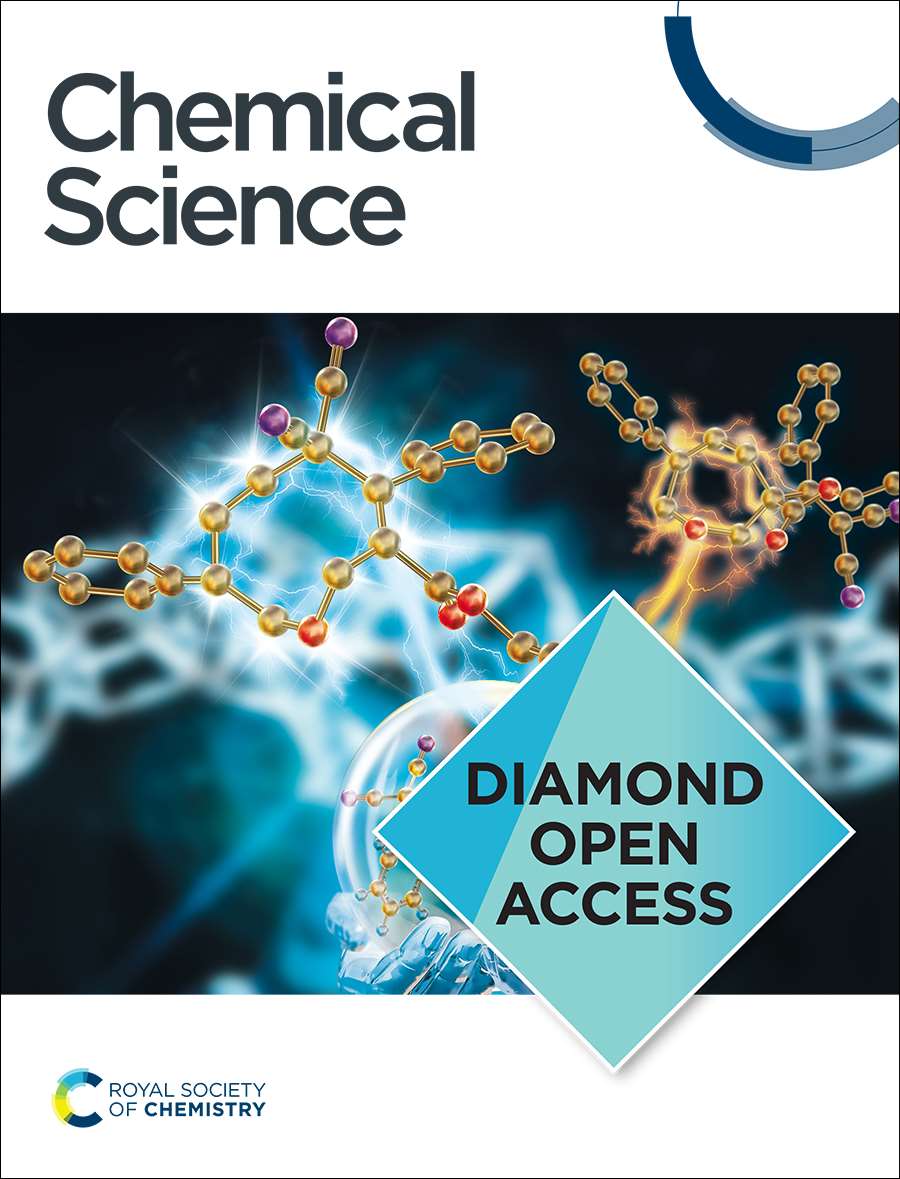Modulating Ultralong Room-Temperature Phosphorescence Through Mechanical Confinement of Tailored Polymer/MOF Hybrid Interfaces
IF 7.6
1区 化学
Q1 CHEMISTRY, MULTIDISCIPLINARY
引用次数: 0
Abstract
Achieving ultra-long room temperature phosphorescence (RTP) remains a significant challenge due to the inherent trade-off between excited-state lifetime and photoluminescence quantum yield (QY). Herein, we report the synthesis of polymer/metal-organic framework (MOF) hybrids via a bottom-up approach, enabling the formation of direct covalent integration between polymer matrices and MOF structures. By systematically optimizing the incorporation of long-chain alkyl amines during the synthesis process, the resultant hybrids demonstrate green RTP performance, achieving a lifetime of 359 milliseconds (ms) at room temperature (592 ms at 77 K), and a phosphorescence QY of ~ 28%, whereas no detectable phosphorescent is observed in the parent MOFs and polymer components. Notably, nanoindentation-based mechanical analysis reveals, for the first time, a clear relationship between increased matrix rigidity and enhanced RTP performance. Additionally, a detailed investigation highlights the pivotal roles of extensive intramolecular hydrogen bonding and covalent linking between polymer and extended frameworks in stabilizing triplet states, enabling efficient RTP. The hybrid materials also demonstrate good processability, allowing the creation of flexible RTP-emissive fibers and films (lifetime of 408 ms at RT and 613 ms at 77 K) that leverage their inherent flexibility. Furthermore, these hybrids exhibit good selectivity in detecting water over other alcohols, underscoring their potential for smart sensor applications.通过定制聚合物/MOF杂化界面的机械约束调制超长室温磷光
实现超长室温磷光(RTP)仍然是一个重大的挑战,由于激发态寿命和光致发光量子产率(QY)之间固有的权衡。在此,我们报道了通过自下而上的方法合成聚合物/金属有机框架(MOF)杂化物,使聚合物基质和MOF结构之间形成直接共价整合。通过在合成过程中系统地优化长链烷基胺的掺入,得到的杂化产物具有绿色RTP性能,在室温下的寿命为359毫秒(ms)(在77 K下为592 ms),磷光QY为~ 28%,而在母体mof和聚合物组分中没有观察到磷光。值得注意的是,基于纳米压痕的力学分析首次揭示了基体刚度增加与RTP性能增强之间的明确关系。此外,一项详细的研究强调了聚合物和扩展框架之间广泛的分子内氢键和共价连接在稳定三重态中的关键作用,从而实现了高效的RTP。混合材料还显示出良好的可加工性,允许创建灵活的rtp发射纤维和薄膜(在RT下寿命为408 ms,在77 K时寿命为613 ms),利用其固有的灵活性。此外,这些混合物在检测水方面表现出比其他醇更好的选择性,强调了它们在智能传感器应用中的潜力。
本文章由计算机程序翻译,如有差异,请以英文原文为准。
求助全文
约1分钟内获得全文
求助全文
来源期刊

Chemical Science
CHEMISTRY, MULTIDISCIPLINARY-
CiteScore
14.40
自引率
4.80%
发文量
1352
审稿时长
2.1 months
期刊介绍:
Chemical Science is a journal that encompasses various disciplines within the chemical sciences. Its scope includes publishing ground-breaking research with significant implications for its respective field, as well as appealing to a wider audience in related areas. To be considered for publication, articles must showcase innovative and original advances in their field of study and be presented in a manner that is understandable to scientists from diverse backgrounds. However, the journal generally does not publish highly specialized research.
 求助内容:
求助内容: 应助结果提醒方式:
应助结果提醒方式:


